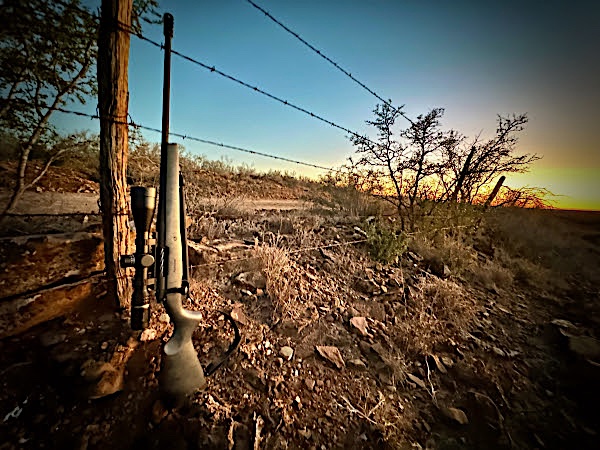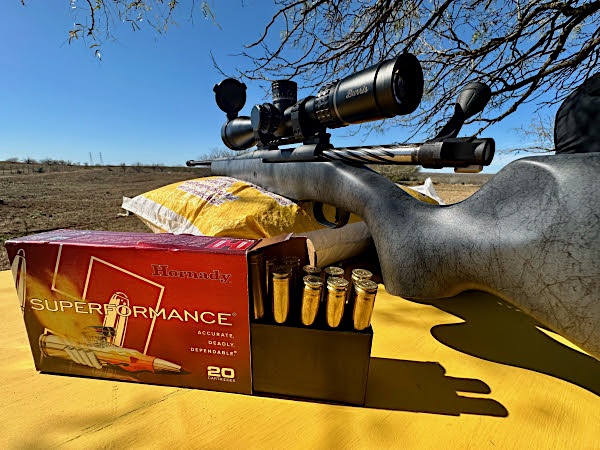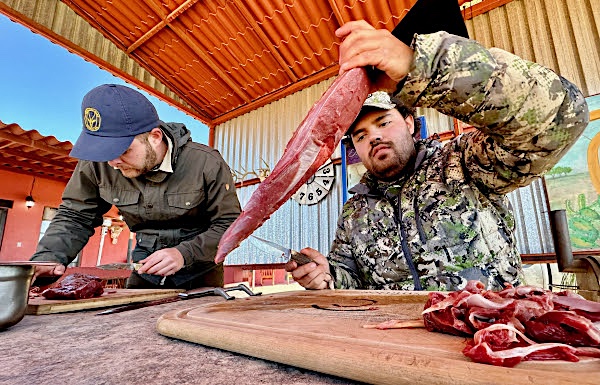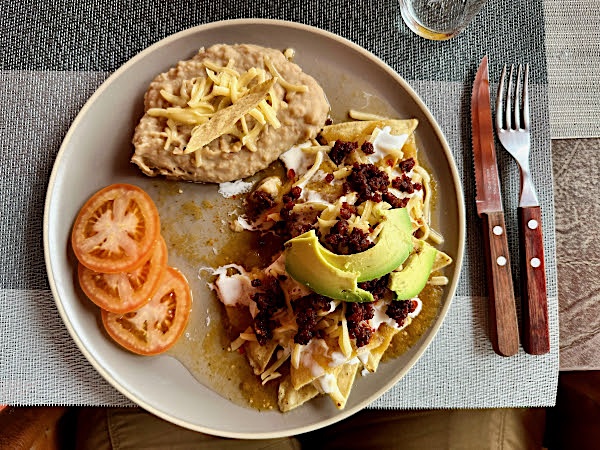
By Jay Pinsky
“I’m holding out for a 140+ buck.”
That was my mindset heading down to Nuevo Laredo, Mexico, where I booked a hunt with Sirius Outdoors. Looking back, I should have said nothing. Why? Because if I settled for a 140+ buck, it would have robbed me of a far greater trophy.
Sirius Outdoors is a two-man guide and outfitting service run by lifelong best friends Diego Monjaras and Jose Ramirez. Their destiny began when their fathers met in college, became best friends, and remained so. Diego and Jose have hunted together nearly their entire lives. A business between two friends doing what they loved was inevitable.
“Sirius Outdoors started out as a dream,” said Jose. “We are a team of a lawyer and an engineer that had a passion for the outdoors, and we just decided to drop all we were doing at that moment to start something more related to what we love – a company of guiding and getting a network for people to Mexico to have them experience what we love and take them outdoors. We started with what we know: whitetail deer hunting here in South Texas and North Mexico.”

Sirius Outdoors guides on Rancho Los Papalotes, founded in 1980 and spans about 10,000 acres or, more accurately in Mexican terms, 5000 hectares (one hectare is equal to 2.47 acres), which begins five minutes after Mexico does after crossing the Rio Grande near Laredo, Texas.
Carpeted in mesquite, cactus, and red clay, the working ranch is home to prize-winning Beefmaster cattle, which share their prickly pear pastures with white-tailed deer, coyotes, bobcats, feral hogs, javelinas, an unlimited cottontail, and jackrabbits, and allegedly nilgai antelope.

To the naive, the thick, monotone cover of Rancho Los Papalotes hides everything. But, for the patient observer, a quiet sit — especially from an elevated box blind — reveals an ecosystem thriving with healthy, rambunctious wildlife thanks to ample food, water, and shelter.
“While Rancho Los Papalotes is mainly a cattle ranch, it’s also a good habitat for other animals like deer because of the thick brush and good protein sources which help the deer antlers grow taller,” said Jose. “We have a nice ranch with many water sources because of the cattle, which also helps the wildlife.”
Diego and Jose intend to keep it that way, too.
Their hunting counsel is founded on building and sustaining a healthy population of trophy-class white-tailed deer for generations. From day one, Jose, my guide for the week, preached a trophy measurement preference of age over antlers.
“Our program management means caring for the younger deer to let them grow,” said Jose. “That’s the goal of this organization, to conserve the wildlife that we’ve got here, and that’s why we’ve been taking lots of care of those younger deer, and we focus not only on the antlers but also on the age of the deer. And as hunters. We want to take the older deer, the animal past its reproductive cycle, that is not helping the herd anymore. That is not helping the environment anymore. So that’s part of our job as hunters, helping herds improve.”
Jose’s logic was familiar, reminding me of the kind of hunter I wanted to be. Was I just another shooter, or was I a conservation-first hunter? I didn’t know it yet, but Mexico would reveal my truth by the end of the hunt.
My first hunt was an evening one after Diego picked up the American-laden hunting group from our hotels in Laredo, Texas. With world-class travel ambassador precision and a calm maturity lost on more than a few people these days, the 20-something-year-old Diego planned, communicated, and executed our border crossing into and out of Mexico so smoothly that it was almost fun.
I’ve paid a lot more for international hunts, and just getting there was more problematic than my trip into and out of Mexico. I didn’t need to slip $20 bills into people’s hands at every stage of my border crossing, no one claimed to lose my paperwork, challenge my ownership of firearms or ammunition, nor did any of my luggage show up with fewer items than I packed by the time I got to the ranch. Credit that to Sirius.

Jose and I climbed into a roomy and well-built tower box blind about 150 yards off an intersection of ranch dirt roads. Being elevated was the only way to see any success, and it didn’t make anything easy – it just made things possible. From my first sit until my last, my head remained on an elevated swivel because the wildlife came from everywhere and anywhere – and because it was so thick in every direction, their appearance always seemed to come out of nowhere.
Once inside my blind, I quickly ranged what I could for anchor points. As a deer hunter in Virginia, I’ve learned the time to know a deer’s range is before it shows up, not when it does.
The Burris Rangefinder LRF 10×40 binoculars worked, and I used them every day. I paired it with Burris’s super-techno Veracity PH 4-20x riflescope to give me clear, functional optics for both my eyes and my Mossberg Patriot rifle.

Going into the hunt, I looked forward to leveraging the advanced long-range shooting solutions the Burris Veracity PH gives shooters. In simplest terms, the scope’s electronics convert windage and elevation adjustments into simple yardage increments.
For example, if your rifle load data calls for a shooting solution of 2 MOA for a bullseye hit at 256 yards, then you simply adjust the elevation turret to 256 yards in real time as displayed by the digital readout in your sight picture. Say the target moves to 456 yards, no need to check your dope chart. You dial your scope until the readout says 456 yards, execute a proper shot, and Tada!
The Burris Veracity PH non-click sight-in and target adjustment system may seem complicated to use at first, but I chalk that up to being different more than problematic. Change can be challenging for people (like me) who are used to more tactile, felt-click riflescope adjustments.
Using the Burris Veracity PH was very different. The bottom line is that the riflescope worked at the range and in the field. Unfortunately – wow, I can’t believe I wrote that – everything I shot in Mexico was well within point-blank range of my 100-yard-zero on the Mossberg 300 Winchester Magnum, so I never adjusted my settings. There are worse fates in life.
Speaking of fate, the first sit of my hunt resulted in my first bobcat sighting, a lifetime bucket list game animal for me. The trouble was he was so close and was in sight so briefly that I couldn’t maneuver the rifle low enough or fast enough from the elevated stand to put the crosshairs on him. I saw him, though, and for that day, the first day no less, it was a moral victory – and later comic relief around the dinner table as we retold the story of me flailing about trying to shoot the bobcat.
“It was an interesting hunt,” Jose added. “Bobcats are tough creatures to hunt. They’re hard to see, they’re elusive.”
I celebrated just seeing a bobcat because it’s so rare. Little victories, right? I didn’t think I’d even see a second one; better yet, I’d have a chance to shoot one. Little did I know Mexico had other plans.
“Well, you never lose hope,” said Jose. “We decided to move to a different area where we’d seen another bobcat on camera, a nice mature male.”
Two days later, it happened. I’ll let Jose tell you the rest of the story . . .
We weren’t in the stand more than 40 minutes. Jay saw that bobcat immediately while I looked in a different direction. He saw the bobcat, and as soon as I saw him, I knew he was a big bobcat. We got just a glimpse of him. He walked through the Sendero to the prickly pear cactus and vanished. We just waited a bit, then decided to make a mouthcall for him to see if we could get his attention. Yep, we did.
He showed us just enough to take a shot, and Jay made a perfect shot in the chest. It was a complete pass-through, and the bobcat was down at about 60 yards. It was a most beautiful shot. We had a big surprise when we walked up to that bobcat. It was the biggest bobcat I’d seen in these properties so far. It was a big, beautiful bobcat. It had beautiful fur, and I’m happy to see Jay have the biggest bobcat from this property so far.

With our bobcat down, we finished our evening sitting on that stand hoping for our trophy buck, but Mexico decided a bobcat was enough that day, and frankly, I agreed. I texted Linda Powell, Mossberg’s Director of Marketing, about the bobcat. I was ecstatic and confessed I was more excited about getting my first bobcat than a big buck. Her response? “LOL.”
Speaking of Mossberg, this was my third hunt in three years with a Mossberg Patriot. I own one in the red-hot 6.5 PRC which has accounted for an Alabama white-tailed buck and my first elk, taking a cow in Utah. This Mossberg Patriot was a Patriot LR Hunter, and shot just fine on the range grouping my perferred load, 180-grain Hornady Interbonds into 1.25 inches in a five-shot group. The rifles have always worked well for me, and this one was no different proving to be minute-of-bobcat early in my hunt, and as you’ll read about later, absolutely perfect when the shot of a lifetime presented itself.
A few more trips to elevated box blinds provided plenty of eyeballs on healthy does and solid bucks with 8, 9, 10, and even 12-point racks and as old as 3.5 years, but none of them passed the shooter criteria Jose and I agreed to at the start of the hunt. As the five-day hunt began to wind down, I began to accept the reality that I’d go home without taking a deer, and I’d be lying if I told you I wasn’t starting to get a little disappointed.
Like the bobcat, Mexico had other plans for me, though.

Now is as good a time as any to tell you that the meals and accommodations side of Sirius Outdoors was top-notch. I’d never been to Mexico, and my only special food request was to thoroughly enjoy authentic Mexican food while I was there.
Diego didn’t disappoint me, or anyone else in camp, evident by the fact that despite not being able to import any wild game back across the border, I indeed carried a few more pounds of flesh with me in the form of specific weight gain from the delicious and ample meals I had. Every meal was fresh, handmade, and traditional to Mexican culture, right down to the tacos, chilaquiles, and, yes, finally, my first tamales.

A full belly went a long way to treating my anxiety about taking a trophy buck in Mexico. On Sunday morning, Mexico cured it.
Again, I’ll let Jose tell you the rest of the story . . .
Well, about that morning hunt, I learned a lot from Jay; he’s definitely a different kind of hunter. We’ve been a little bit frustrated because we’ve seen nice bucks. We’ve seen some future trophies but couldn’t get big guys out there. We were running out of time.
I indeed saw big bucks every day. The problem was that all I saw were big young bucks who were nowhere near their potential, and on Rancho Los Papalotes, the goal wasn’t shooting good bucks. It was shooting mature, great bucks. I soon learned that there’s much more to judging a great buck than just antler size.
My trophy buck arrived Sunday morning, as did my right of passage as a mature hunter.
Again, I’ll let my guide tell you the rest of the story:
(On Sunday morning) We had a nice talk in the blind about what exactly a trophy buck is to us,” said Jose. “We saw a lot of bucks, maybe eight or nine that morning, but they were all younger deer, and then out of the nowhere, this big, mature buck comes out, and it was completely evident to us that this was the main buck of that area, that he was the dominant buck there. You could see he was.
He was always with the does, and no other bucks would go around him. He was also a beautiful eight-pointer with broken eye guards, and his antlers were visibly worn down from age. He was a shooter, age-wise. Maybe antler-wise, we could do better than that. But just the thing about deer hunting is that you don’t shoot only the trophy. You see, you don’t shoot only antlers.
The defining moment for this buck and for me was when a young eight-pointer tried twice to pick a fight with this buck. Twice, the elder buck walked away. The foolish young buck bore the brunt of a genuinely dominant animal the third time as the older buck locked antlers and thrashed the youngster so quickly and violently that I swore I heard it yelp when it got back on its hooves and ran off.
After I witnessed that, after I saw that dominant buck in all his glory, I knew he was the “trophy” I dreamed about all my life. I didn’t care about his rack. I saw his Boone & Crockett-sized heart, which was bigger and better than anything I had ever seen.
Then, I looked over at Jose and said he’s the one. Jose smiled as he witnessed me mature as a hunter at that very moment. I steadied my Mossberg Patriot 300 Winchester Magnum and placed the crosshairs dead-center on the buck’s shoulder. Well, I wanted to anyway. In that split second between Jose and me, the old, smart buck slowly ducked back into the thick brush after his victory. Linda Powell later reminded me, “Bucks don’t get that old without being wise, Jay.”
I waited. I waited some more. I was steady, calm, and patient, but so was my buck. Then, the buck peeked out just enough for me to anchor the Burris FFP optic’s crosshairs squarely on his shoulder. I squeezed the Patriot’s trigger, and the rifle barked, airmailing a Hornady 180-grain Interbond stamped with the postage of my trophy deer hunt hopes and dreams 225 yards through the dusty, dry Mexican air.
Thanks to an aftermarket muzzle brake on the rifle (suppressors are illegal in Mexico), my eye never left the optic’s sight picture through my shooting cycle, so I had the honor of seeing this old, beautiful, noble deer buck like a world-class bronco one last time as he fought his last fight. He didn’t lose that one, either. Witnessing a wonderful animal’s last moment is never a victory to any hunter, at least not one worth a damn. No, what I felt wasn’t a victory; it was humility, gobs of it.
After the deer fell motionless less than five yards from where I shot him, we paused in that stand. We said nothing, then I secured the rifle, and we climbed down to go see my world-class trophy deer. He was incredible when I saw him alive through the Burris optic, and every time I’ve seen him since, he’s gotten better like true legends often do.

I was glad I got to hunt with Jay; he’s a different kind of hunter. There is the feeling you get when you see a deer like that, when you see a deer that it’s mature and ready to go. I have a lot of new hunters or, nowadays, the modern hunter who only thinks about the inches of the deer. They’re always hunting with a measuring tape. And they’ll say things like I don’t want anything that scores under 150. And we have those here. It’s just a matter of luck to find them and mostly being in the right time at the right place. Jay decided a trophy buck was different for him that day, and I agreed.
Later that evening, Jose and I reminisced about our morning hunt and what a trophy is. Here’s Jose’s definition . . .
A trophy deer is the one that gets your heart racing for whatever reason. A deer becomes a trophy when you decide it is. You get to think of that animal hanging on your wall, remembering all the time you had, all the moments you lived on that hunt whenever you see the animal. Who were you with? What did you eat? If you had fun, if you had a bad time if the weather was bad. That’s what a trophy is for me. It’s not points. It’s not measuring. It’s the memories.
Thanks for the memories, Sirius Outdoors.
